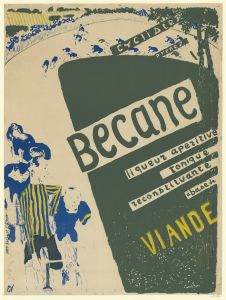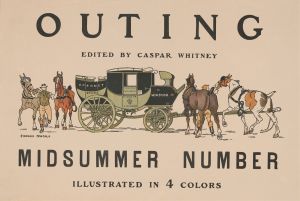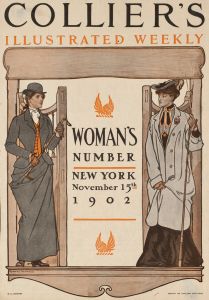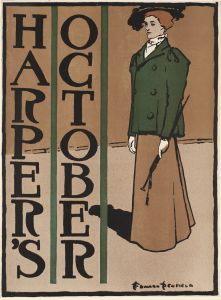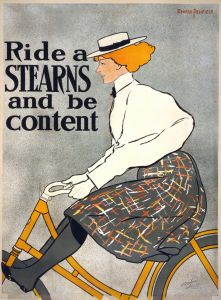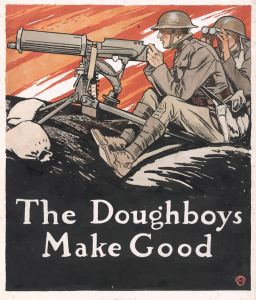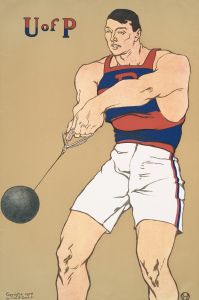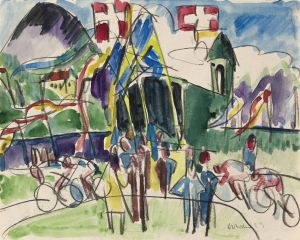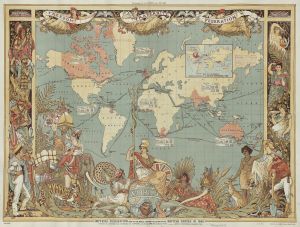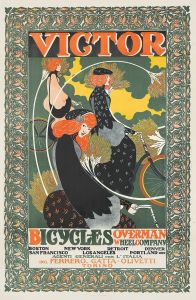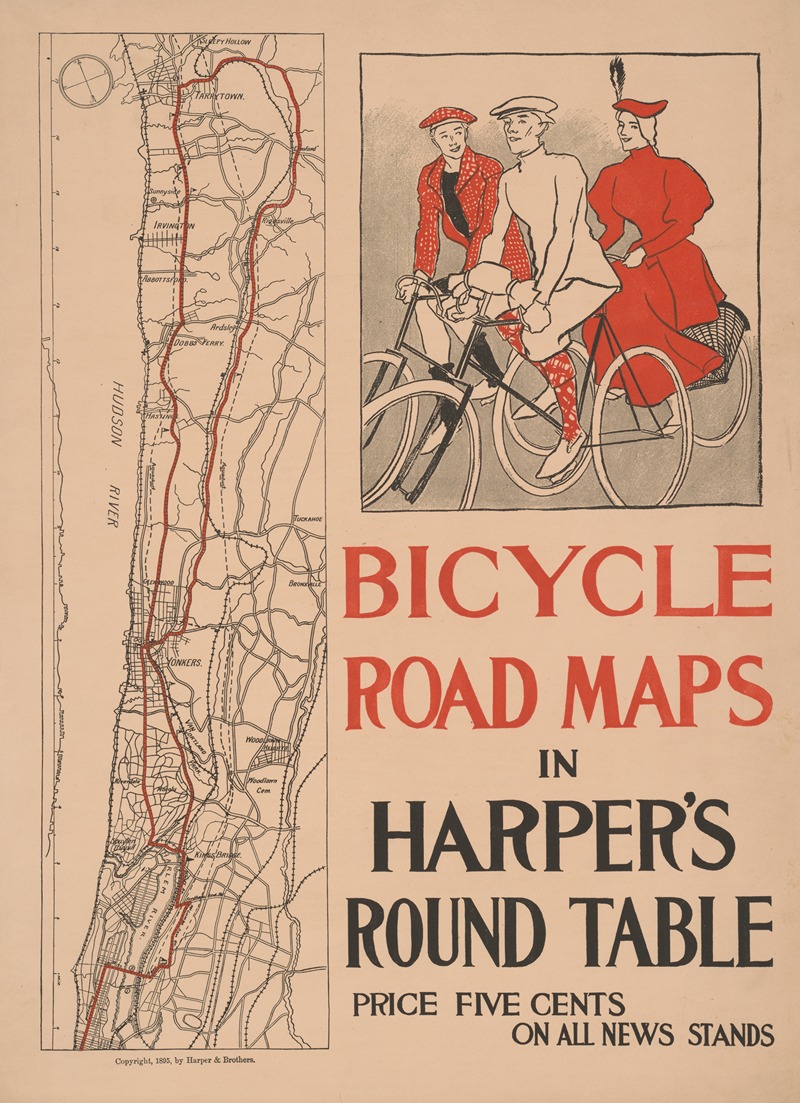
Bicycle road maps in Harper’s Round Table
A hand-painted replica of Edward Penfield’s masterpiece Bicycle road maps in Harper’s Round Table, meticulously crafted by professional artists to capture the true essence of the original. Each piece is created with museum-quality canvas and rare mineral pigments, carefully painted by experienced artists with delicate brushstrokes and rich, layered colors to perfectly recreate the texture of the original artwork. Unlike machine-printed reproductions, this hand-painted version brings the painting to life, infused with the artist’s emotions and skill in every stroke. Whether for personal collection or home decoration, it instantly elevates the artistic atmosphere of any space.
Edward Penfield was an influential American illustrator and poster artist, known for his significant contributions to the art of illustration during the late 19th and early 20th centuries. One of his notable works is the illustration titled "Bicycle Road Maps," which appeared in Harper’s Round Table, a popular publication of the time.
Harper’s Round Table was a magazine aimed at young readers, published by Harper & Brothers from 1895 to 1899. It was a continuation of the earlier publication, Harper's Young People. The magazine featured a variety of content, including stories, articles, and illustrations that catered to the interests of young audiences. Edward Penfield's work frequently appeared in Harper's publications, and his illustrations were known for their distinctive style and clarity.
"Bicycle Road Maps" by Edward Penfield is an example of his work that captures the spirit of the era, particularly the bicycle craze that swept through America and Europe in the late 19th century. During this period, bicycles became a popular mode of transportation and recreation, leading to the development of cycling clubs and the publication of road maps specifically for cyclists. Penfield's illustration reflects this cultural phenomenon, showcasing the importance of bicycles in everyday life and leisure during that time.
Penfield's style is characterized by bold outlines, flat colors, and a keen sense of composition, which were well-suited to the printing techniques of the time. His work often featured everyday scenes and activities, rendered in a way that was both accessible and visually appealing. In "Bicycle Road Maps," Penfield likely employed these techniques to create an engaging image that resonated with the magazine's readership.
The illustration would have served both an aesthetic and functional purpose, capturing the excitement and novelty of cycling while also potentially providing practical information for young cyclists. Penfield's ability to blend art with utility made his work particularly effective in publications like Harper’s Round Table, where illustrations were not only decorative but also informative.
Edward Penfield's contributions to illustration and graphic design were significant, and his work in publications such as Harper’s Round Table helped to define the visual culture of the time. His illustrations remain an important part of the history of American art and continue to be studied for their artistic and cultural significance.
While specific details about the content and composition of "Bicycle Road Maps" are limited, Penfield's broader body of work provides valuable insight into the themes and styles that characterized his illustrations. His legacy as a pioneer of American illustration endures, and his works continue to be appreciated for their artistic merit and historical importance.





